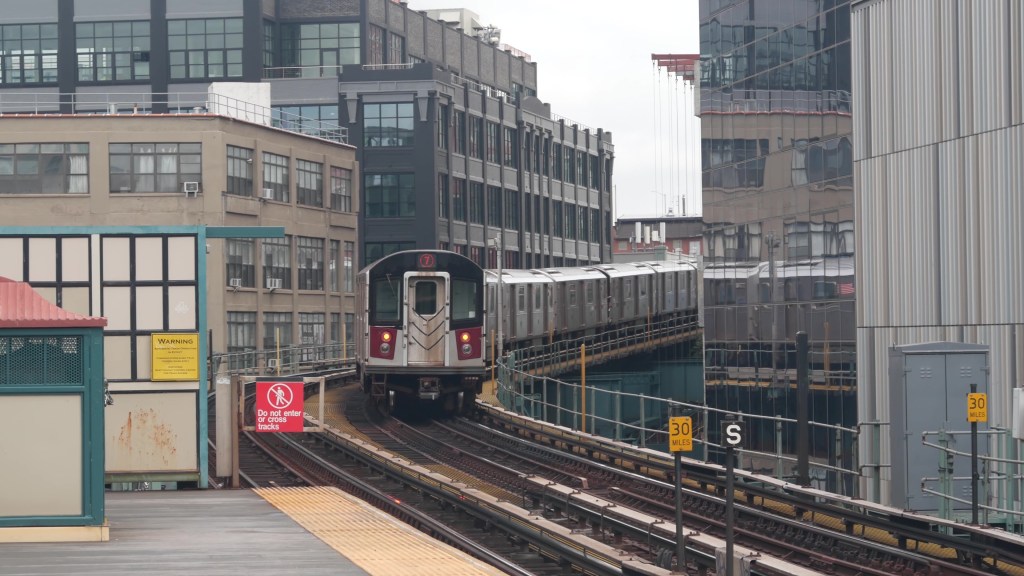By Chris Fuchs
New York state will receive $1.5 billion over a 15-year period for various environmental programs if the U.S. Senate approves and the president signs a bill passed by the House in May, U.S. Rep. Joseph Crowley (D-Flushing) and Interior Secretary Bruce Babbitt announced at MacNeil Park in College Point last Thursday.
Invoking the names of Frederick Law Olmstead and Calvert Vaux, the 19th century designers of New York's premier greenspace, Central Park, Crowley told a sparsely attended press conference that $11 million of these government funds each year would be funneled into protecting urban parks as a gaggle of kids played in a nearby jungle gym.
“I'm making myself heard, I'm fighting for urban lands and greenspace amongst concrete,” Crowley said, stressing that he is the only delegate from New York assigned to the House Committee on Resources, which deals with park and forestry issues. “Just because I have an urban constituency doesn't mean we don't have concerns about the environment.”
The bill, called the Conservation and Reinvestment Act, passed the House of Representatives in May and is now before the Senate for consideration. In the House of Representatives, there were 315 co-sponsors of the bill, but in both the House and the Senate there is a “vocal minority” that views it as an example of overreaching governmental authority, said Chris McCannell, Crowley's chief of staff.
Still, McCannell believes that because of strong bipartisan support, the bill will ultimately be approved by the Senate and signed into law by the president.
In all, the bill would provide all 50 states, eight territories and the District of Columbia with about $3 billion each year for a multitude of environmental programs. Royalties that oil companies must pay in order to drill off shore would finance the bill.
The Land and Water Conservation Fund, a reserve established in 1964 for both state and federal environmental programs, for example, would benefit greatly from such funding. Calling its present incarnation “a case of false advertising,” Babbitt said that the conservation fund has languished for years, failing to rise to the $900 million preset funding level. Passage of the bill, however, would boost up this fund to the baseline level, he added.
Specifically how the funds would be divvied up among the 62 counties of New York state would have to be decided by the state legislature.
At MacNeil Park, a verdant stretch of greenspace hugging the shoreline of the East River at the northeast tip of College Point, the prospect of the bill's passing was received well by parkgoers, who said it was fitting that this parkland was chosen to discuss funding for urban public areas.
“A lot of times College Point is overlooked,” said Elizabeth Walsh, holding her 2-year-old daughter, Jennifer. Walsh visits MacNeil Park at least once a week with her daughter and son, Joseph. And MacNeil, she said, pales in comparison with Crocheron Park, which abuts the Cross Island Parkway near Corbett Avenue in Bayside, in terms of its level of upkeep.
The bill would also allocate $40 million per year for coastal conservation, some of which could be used for improving the water circulation of Flushing Bay. As a reporter asked how these funds would be used in Queens, state Assemblyman Ivan Lafayette (D-Jackson Heights), who had some trouble finding the press conference because of its obscure location, walked in and was immediately pitched the question by Babbitt, the secretary of the interior.
“Ivan,” he said, “you walked in on a great question. If you were given a $40 million check, how would you spend it?”
“With $40 million, we could clean up the shoreline along Flushing Bay,” he responded. “This place may seem out of the way, but if you look at a map, it's almost the center of New York City.”
Aside from coastal conservation, the bill would provide $28 million a year for Land and Water Conservation, and $17 million for wildlife conservation and restoration. Another $3 million would be tagged for sprucing up historic neighborhoods.


































